|
As often as I encourage giving horses and dogs enrichment, I sometimes get the response of, “oh he’s not smart enough to figure that out” or “she’s too lazy to do that, she just wants to eat”. I’m not always sure if that’s an assumption people make because they think of their animals a certain way or if they have tried it unsuccessfully. In either case, my response is the same as it is for other training challenges: break it down, make it easier. And then slowly increase the challenge.
I know from experience that learning to slice things into easier steps is a skill which takes time to develop so here are some suggestions.
0 Comments
A few weeks ago I was walking with the terriers and had almost reached our driveway when I stepped to the side of the road to take a picture. Looking up, I saw Eloise had passed me and was trotting away from me down the road. Her expression made my heart sink a little. Even though I was behind her, I recognized the way she held her head, the set of her ears, the quickening of her step. I had seen it before but not from her. She had lost me. I couldn't have been more than 20 feet behind her but realized I was standing in shadow, off the side of the road. She had gone right past me without seeing me and she was now trotting quickly with her senses straining to locate me. She turned into our driveway, still searching. I quickened my own pace to catch up but did not want to call her in case her hearing orientation betrayed her and she thought I was somewhere I wasn't. I walked rapidly to the end of the driveway before calling her name. Instantly she turned around and her body language showed relief. The tension went out of her face as her ears flattened back when she saw me. She broke into a happy canter and raced toward me, leaping up when she reached me. Another sign that my dear little girl had become a senior dog. Don't get me wrong: I love senior dogs. But it's bittersweet to fall that much more in love with them during this time because there is no other stage to follow. I can hope that she has years of a happy life left but along with other signs I'd seen, it was time to face the music. I need to plan some transitions to keep her safe and happy in those years. Like not putting her in a position where she loses me on a walk. This was the second time it had happened but I didn't recognize it the first time. I was astonished in May, hiking with her on some family property, when I looked around and didn't see her close. Instead she was 75 yards off the path and again, trotting quickly the other direction. She did not respond to my call and Eloise does not ignore recalls unless her head is down a hole. At first I thought she must have been on the trail of a critter. Thankfully, something turned her around (possibly me crashing through the brush and calling louder and louder?) and she came happily back. That day I had flashbacks of when my Beetle dog had disappeared into the woods for three days at the age of 14. He had not run away. He was lost and I thought forever. So it felt like a miracle when he trotted into the barn with his jaunty but arthritic little steps after three days. I had felt the panic of that time when Eloise was so far away from me in the woods. Some would say I should have my dogs on leash all the time so that cannot happen, as well as other potential disasters of off-leash dogs. But we have so much open land available to us- land with no other dogs or people to cause problems and that is just perfect for dogs to explore and climb and sniff. I work hard to train my dogs to a really solid recall and to keep an eye on ME so we don't get separated. With those precursors, I think they deserve and earn the freedom to be a dog off leash. But it is Eloise's inability to keep an eye on me that is failing. It's not a training problem; her senses are failing her. That day on the road she must have passed within six feet of me before getting ahead. Whatever magical combinations of canine senses would otherwise have told her where I was had failed her. There was one other incident recently. That time it was in the house. I was in the corner of the kitchen when, for some reason, she woke up on my bed in the other room and came to find me. I saw her come into the room, looking toward the table where I often sit at the computer. I saw her look around, her gaze sliding right over me toward the door before swinging back and landing on me standing there. Again, the relief as her muscles, from face to tail relaxed and she wiggled her way to me. More memories of Beetle washed over me.  I knew, of course, that her body was aging. She started being bothered by a front leg after jumping off the bed. I thought it was something we could fix but nothing seemed to help. So my first accommodation was to give her a way to get off the bed without such a big jump. They make stairs for that purpose but with a small bedroom made smaller by numerous dog beds, I didn't want to add another piece of furniture. I bought some large foam blocks made for kids and stacked them next to the bed, wedging them between it and the night stand. They're soft, and easy to move. It was a quick training session to get her to go up and down, but a longer time to get her to actually use them when I wasn't there. I think she figured out it was easier on her leg and yesterday she actually barked at me from the bedroom for help getting down when I'd picked them up the blocks for the Roomba to work. 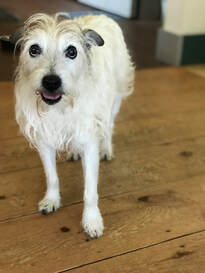 The poor sore foot after a long walk. The poor sore foot after a long walk. Long before I was ready to eliminate lengthy walks, her vet was encouraging it. Again, I knew the routine from my experiences with Beetle: several short walks a day rather than any long ones. But you can't go as many places on a short walk! I have now purchased a back pack she can ride in and feel a bit like a crazy dog lady. Training is in progress for that so that we can go further and she can hitch a ride back home. To prevent her from losing me on walks, I'll need to be more attentive. In new places, I'll put her on a long rope. Thankfully she still loves a leash from her days before living with us when a leash meant outside. I'll also start transitioning her to the cues I used for Beetle when his vision and hearing started to go: stomping my foot on the floor or ground to get his attention (followed by a treat of course), and then waving my arms above my head when he couldn't hear my recalls and his vision didn't detect smaller detail. Beetle had separation anxiety issues which worsened significantly with age, as they tend to do. I've never seen that with Eloise and I hope not to. She loves to go in the car with me so I take the opportunity to have that be adventures we share, rather than long walks. But she also seems content to stay on my bed at other times.  She's getting regular meds now: joint supplements, an NSAID, and Proin for bladder leakage. I line them up every morning to add to her breakfast and set out the ones for the evening. I may have to start separating her from Wilder for meals since they sometimes swap kongs. I want to make sure the right dog is getting the meds and I am able to administer almost everything that way now. For training, I need to get some empty gel caps and start training her to take them (with peanut butter) so that if more or bigger pills become necessary, she'll take them without stress. As I hope you can see, training is a very big part of the picture: past, present, and future. As adjustments are made, I want to be sure we are ready ahead of time if possible, and having Beetle teach me so much will benefit Eloise as I plan for her golden years. 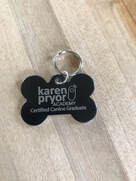 Eloise is my KPA dog. For those of you who know what that means, you understand my heart is in pieces to see this transition. For those of you who don't know what that means, Eloise was the dog who took me through my Karen Pryor Academy training program. Thanks to her, I am a Certified Training Partner. She has more training under her belt than any dog I've had, before or since. I began the program a few short months after getting her from the rescue and we learned together- so much. All dogs are special, but the world changed for me when Eloise and I graduated from KPA. KPA dogs get a special tag but since Eloise doesn't wear a collar (they can be an entrapment danger for farm dogs), she's never worn hers. I think I'll put it on whatever I use when she goes back on a long rope. I am so very grateful for that training in my planning now. For one thing, Eloise knows all about choice. And I know about cues. So when I go out to work with horses mid morning or afternoon, I can poke my head in the bedroom and say, "I'm going out". Sometimes she perks up and comes down her steps to follow me.
There will be times when she wants to come with me and can't. Wilder still loves and needs his long walks, as do I. So we have routines: I make sure she's had outside time, sniffing and hunting, so she's ready for a nap before I go for a walk with Wilder. I leave her with reinforcement in the form of chews when we go. It doesn't make it easy, but at least easier. This spring I attended Clicker Expo Live (the irony of Live! now meaning virtual) and one of the talks I really valued was "Aged and Engaged" by Lori Stevens. It's a wonderful combination of training and body work, and I got right to playing and Eloise loved it. When summer comes, life gets busy and things fall off my plate but I am committing to getting that back on this month, and sticking to it. As a KPA dog, she LOVES training, (ok, all dogs do when trained with positive reinforcement), and so that will definitely be a part of her life going forward. Whether it's training specific to her senior needs, or training fun things, I know that is a way to put fun into her days as other activities get curtailed.
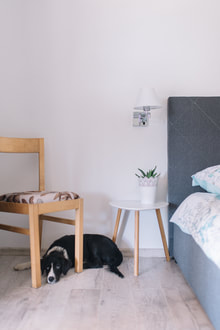 With so many people spending more time at home in the last nine months, I have seen a lot of concern about what will happen to dogs and other pets when life returns to "normal". The worry is that separation anxiety will abound. The point I want to make in this blog post is that there is a difference between a lonely pet and true separation anxiety (SA). Malena de Martini is a well known specialist in Separation Anxiety and is the go-to for trainers wanting to learn more on the topic. On her website, she defines the causes of SA as follows: "Separation anxiety can be instigated by a potentially genetic predisposition, a scary experience when left alone (such as a house burglary or taunting by construction workers), moving, re-homing, changes in the family (the loss or exit of a family member, for example), a particularly traumatizing experience (for example, a dog attack, or being hit by a car), or recurring, overlong absences. The risk factors are infinite and not entirely known." Note that she did not say that SA is caused by a long period of time together, followed by being apart, which is the current concern. This doesn't mean it's not possible, but it's not common enough for her to list it.  Separation Anxiety is similar to an uncontrollable panic attack. That is very different from a dog who is bored at home because no one is there to play or snuggle on the couch with any more. A lonely dog may chew up a shoe because it smells like you and felt good to chew on. A dog with SA is more likely to claw and chew at walls and doorways in a desperate attempt to get out. A dog who is left alone too long may not be able to hold their bladder and/or bowels...or may even have an upset stomach resulting in an accident on the floor. A dog with SA may lose control of these things within minutes of your departure out of sheer panic. I certainly don't want to encourage anyone to ignore concerns about SA if they see distressing indications. It will NOT go away on its own. The dog will not get used to the new routine and recover. Instead, it is likely to worsen dramatically.  If you review the causes which Malena DeMartini lists for SA, you'll see they are things you would either want to avoid anyway (traumatic experiences) or they are primarily unavoidable life changes (moves, loss of a family member). So other than being on the careful lookout for changes in your dog's behavior should one of these situations occur, there isn't much else I can advise you to change. If you do see changes, contact a trainer or veterinarian immediately. Being proactive will give you a better chance at success, rather than waiting to address it. Most importantly, which is why I want to end with this, is how to prevent the loneliness and boredom in preparation for return to "normal times". We want to begin working on that now, so that we can set our dogs up for success by preparing them gradually. First, the loneliness can be minimized by gradual return to time spent alone. If you have been spending most of your day at home and also taking them with you when you go places, start to make short trips without them. If you are going to the store for a quick run in to fulfill your organized list, don't look at that as a possibility for your dog to stay in the car, but rather to stay home. When you get home, look carefully at your dog's environment for small signs of stress. Any nibbles on furniture or clothing? Any drool or signs of excessive water consumption? Providing all looks normal, schedule a slightly longer outing next time and again assess when you return. What you want to do is gradually build up the time which your dog spends alone. Build it so gradually that they don't really notice that it's getting longer. It may not be easy because we want to take advantage of this time to be with our best friends but we also don't want them miserable when we return to work. If you don't have the opportunity to be away from home, you can set up a situation where you do a mock separation. Confine either your dog or yourself to a room or part of the house away from each other. If your dog is accustomed to sleeping on their bed in the kitchen while you are working in your bedroom/now office, they won't feel the separation as acutely as if they are curled up on the couch with body contact for all your working hours. Again, do this gradually, working up to longer periods of time over a matter of weeks.  What can you do to provide your dog with company if you do have to be gone for long periods of time when you return to work? Can you hire a dog walker to play with them and take them for sniffs? Please be careful to screen potential people carefully to be sure they are kind people who enjoy dogs and will keep your dog safe. Get referrals and see if you can observe them sometime. Another option is to find a dog friend. Maybe a friendly neighbor has a dog who your dog plays well with. Is there an opportunity for your dogs to get together somehow? That could provide exercise and mental stimulation for both dogs which would help them be more content when they are alone. Or maybe you work close enough to home that you can take a long lunch a couple days a week to go home and spend time walking or playing with your dog yourself. And finally, if you are lucky enough to be able to take your dog with you to work, even some of the time, and it's a safe and fun environment for your dog, that is another great option. Assuming you have worked out a way for your dog to get some interaction with people and/or dogs, there are also things you can provide to keep your dog entertained when they are alone. Please take precautions with all of these recommendations because you know your dog best. Do not leave them unsupervised with any toy if your dog is a known destroyer and consumer of toys! I have a page on my website with some suggestions of toys which my own dogs enjoy. I also have a youtube video showing how to use the contents of your recycling bin to create a fun mealtime challenge. Even if you don't leave these things for your dog to utilize unsupervised, enrichment activities will tire them out so they sleep better when you are gone. Again, if you are concerned that your dog is exhibiting symptoms of Separation Anxiety, don't hesitate to contact a professional. If your dog seems content, be thankful but also create and execute a plan to help them transition to more time alone when that becomes reality.
Having coordinated his routine with our needs in his first couple weeks here, we have been able to adapt to his ever decreasing needs for sleep and increasing needs for activity. It's far easier when the weather is pleasant for being outside.
When it comes to the working skills themselves, I do not teach those. His genes will turn those on over time. Our job is to channel those skills toward our needed uses. I have discovered the fun of playing Kay Laurence's "sheep balls" game, which is a wonderful way to watch and guide a growing BC puppy's herding skills. We also have to manage him very, very carefully to prevent him from practicing his herding skills on inappropriate targets such as vehicles and horses.
I almost hate to write about one last point as I don't want to jinx us. But I'll toss some salt over the shoulder and hope for the best. Ketch is my husband's dog. He is our seventh Border Collie and we have tried many different approaches to attempt to use me as the trainer and him as the eventual handler. With our first couple BCs, I was trainer and handler as I did a little trialing and learned my way. But things have changed over the decades and now my job is working with my horses and dogs as well as other people and their dogs and horses. My husband is truly the livestock person so I get the Border Collies as puppies and retirees (my favorites as it is), then hand them to him for their working careers.
I seem to have worn off on him over the decades and gained his grudging respect for my training techniques. He feels less enamored with my human training. So with Ketch, we're trying a day training model. While he spends time playing with him and going on farm adventures with him, I do the basic training. Only when I feel like Ketch is reasonably solid on a behavior, do I transfer it all to my husband. So far, so good. But we've got a ways to go. I've said it before and I'll say it again. Puppies are exhausting! While we are in the midst of puppy mayhem, I thought it would be a good time to write about how we are managing so that I can share this in the future with puppy clients. There are so many things you are faced with when you bring a puppy home. Housetraining, chewing, feeding, biting, socializing, and also sleep for the humans. How to do it all? Puppy above has been named Ketch. He is a Border Collie, from highly successful working dog lines. And by working, I mean herding livestock. That is what we would like him to do when he grows up, so that’s what we looked for in a puppy. We picked him up at nine weeks old. He had an incredible journey with four different transporters to get him home because he came from Canada during the pandemic. It was a minor miracle to get him here. He came through the journey wonderfully, showing boldness and confidence once we got him out of the car at home 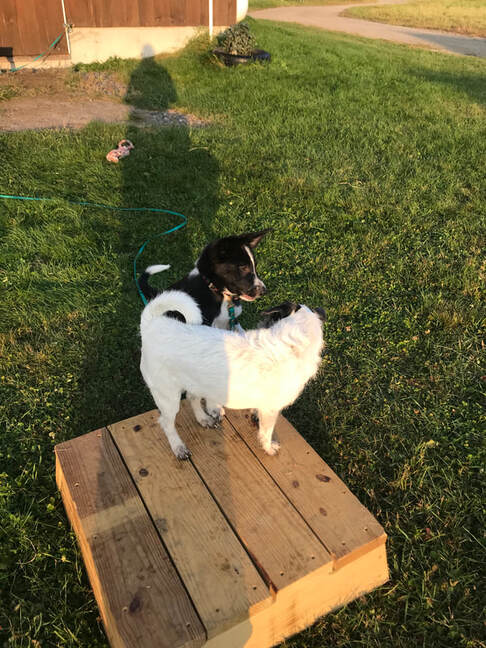 The first week was spent adjusting to his new home. There was plenty new for him to see and do just in acclimating to his new environment. We didn’t ask any more of him than that. We were able to introduce Ketch to our other dogs fairly gradually. He met the two terriers right off since he would be sharing living spaces with them. Our adult Border Collie lives in a separate part of the house so we waited a couple days before introducing them. He still has not met the Maremmas who live with the sheep although they have seen each other from a distance. That’s the best way to introduce puppies to other dogs. Let them see them at a distance first, play in adjoining spaces so they can see, smell, and hear the others before allowing contact. There is no need to introduce him to a zillion new dogs this early. I knew the terriers had the temperaments to be kind to a puppy. I also loaded on the attention to existing dogs in the household. Puppies get a lot of attention automatically. Our older dogs were given special time and treats. When the puppy is sleeping, I can take the older dogs out for a favorite walk or ride in the car. When doling out puppy food, toys and other things, I make sure the big dogs get some too. I cut back on the amount in their regular meals if necessary to avoid weight gain. During the first week of adjustment we just tried to ride the waves. We immediately set up a cycle I learned years ago from Ian Dunbar which is based on puppy needs: sleep -> eliminate -> play -> eat -> repeat We stuck to this cycle but the initial period was bound to be bumpy since we didn't know how long each phase would be. Setting up a puppy apartment for Ketch made it so much easier. When I learned the above cycle, the sleep phase was to be done in a crate and the play phase was under supervision. Having clients who had to spend long hours at work, we worked together to come up with a way to attach an ex-pen to the crate so the puppies had more room to play when people weren't home to supervise. More recently I added a planned potty area to the apartment as well after looking into the popular “Puppy Culture” materials. Knowing that puppies have small capacity, giving them an acceptable area to use can eliminate accidents on floors and carpets. For Ketch, I put an old stained towel in his crate so if he chewed it up, I didn’t care. I used a boot tray for his potty area. Ketch had been living in a barn on straw with his littermates so I knew that straw would help him transition to the idea of using the tray. Because straw isn’t absorbent but just allows fluids to seep through, I added pee pads under it. There was plenty of room in the rest of the ex pen for playing with toys and chewing on things I offered, and there was no access to furniture or shoes. The only time he was out of this area was when we were fully supervising, meaning eyes on puppy at all times! Mostly that was outdoors but we did occasionally let him play in the house as long as we were sure his bladder and bowels were empty. I spent a lot of time the first couple days helping him adjust to this area. I learned with our previous Border Collie that just putting a puppy in it and walking away creates a miserably lonely puppy who can quickly learn to climb an ex pen and get out! Instead, I made sure Ketch was good and tired before I put him in it, and I sat in a chair right on the other side of the pen so I was close and could reach in to soothe him gently as he settled down. Two weeks later, I know he could easily climb out but he doesn’t even try (knock on wood) because he is conditioned to settle down when put inside. Nights- I made two accommodations for nighttime. The first was that I brought his crate into our bedroom and put it right next to the bed. That way he could smell us close, hear us breathing (snoring) and I could reach into his crate with my fingers to rub his body without lifting my head off the pillow. The first night I did this several times when he whined or I heard him get up. The second night I only needed to do it once or twice, and after that, he slept right through. Thinking back, he also spent an hour or so in bed with my husband the first two nights and I moved the sleeping puppy into his crate when I went to bed.
After the first week, we started to see a pattern emerge. We observed to learn the time for his unique active, sleep, and elimination needs and we recorded them! This was important not only because the days blur together but there were two of us managing him so it was nice to come in the house and know what had happened up to that point. We worked to coordinate his schedule with ours, rather than imposing one onto the other. By the end of the first week I stopped moving his crate into the bedroom. He was consistently going into it and crashing immediately at bedtime so I didn’t think he needed me right next to him any more. There wasn’t a blip of disturbance from this change, which was a good thing because in ten days he had outgrown the crate that fit in our room.
When he goes out this time he pees and usually poops again, then has a long play period while I do my chores in the barn. He plays with the other dogs, sniffs around in the grass, learns about cats, climbs onto and into various things I set out for him, and chews on bully sticks. He is on a long line and I watch him carefully, but don't necessarily hold the line. This lasts for about two hours. I think the length of it is partly due to his active breed and would guess that other puppies might not need that long a play session at only 11 weeks old.
The length of this sleep seems to be flexible. If we leave the house and just check back in occasionally (and silently), he can sleep until noon. If we are in the house moving around, he will stir and if we need or want, we can take him out for another long play session about 10:30 to noon. I try to be sure we vary which of those we do so that he doesn’t get overtired or over energized as days go by. Either way, at noon he gets another meal in a food toy, then outside for a play session (length determined by whether he was out for a second play in the morning), then back into his ex-pen with another bone or chew for another nap. This too, can be flexible. He needs to sleep until 3: but if left will go longer. He spends another hour or so outside while I do afternoon chores, then has his dinner at 5:30. At 6: he goes out for a potty break and short play session and then he often plays underfoot while we eat dinner. If he gets too rowdy (barking at the other dogs, chewing on the table legs or our feet), he goes into his ex pen.
Now that we have some semblance of a routine, we have begun adding other activities into his play periods. Both socialization and training will fall under the heading of play. That's because both of those should be fun for the pup! We have taken him for short rides in the car to watch people out the window. My husband has spent time just sitting in the farm truck with him so he gets used to that vehicle. We have let him see the sheep and cattle from a distance. We've done tiny training sessions focusing on recalls.
I have also set up physical challenges and novel items for him that are always optional and never anything which could hurt growing bodies.
All these things will be part of his life as an adult so now is the time for him to see them at his own pace.
Summertime just bursts with things to do and it seems we never have enough time to do it all. My dogs and I are big fans of training of course, so we like to work on things like
Thunderstorms and fireworks are stressful on many dogs- up to 50% of dogs! They have both already begun but there are bound to be more. Desensitizing our dogs to them is an ongoing practice. Even if you haven't seen stress from your dog related to these things, I guarantee you they will appreciate what's involved with the desensitization process so go ahead and work on it as a preventative measure. You never know when fears might crop up. Far better to be proactive.
Ahead of time- don't wait for a storm or your neighbor's random fireworks display. You can find recordings of fireworks on the internet. Get yourself some great treats and turn the volume way down low before beginning to play it. As it plays, just quietly feed your dog treats. When the treats run out, turn it off and that's session one complete! If your dog doesn't seem to notice the sound, that's ok! Don't turn it up. Good desensitization work happens when the dog is below threshold. If you turn it up until he is reacting, you've already pushed them over threshold. The next session you can turn the volume up just one notch and repeat feeding treats while it plays. Each time you will progress a little further up the volume scale. Each time your dog will learn that the sound of thunder (or fireworks, or whatever sounds you are working with) predicts treats and along with that comes happy emotions instead of scared emotions. There was an interesting article recently about how effective this is when taking the physics of sound into account. If you would like to learn more about this, you can read the article in the Whole Dog Journal.
Putting one of these on before you begin your desensitization sessions is a great way to help your dog predict that a nice snuggle with you while eating snacks is about to begin. This is another reason not to push them over threshold! You don't want them to predict that putting something on means something scary is about to happen. Instead, it should predict a relaxing and enjoyable time with his person (and there's that funny but quiet sound in the background but no worries).
If you or your dog aren't the snuggle on the couch type, playing a fun game can be another activity to take your dog's mind off the noises.
Finally, if none of these are sufficient, please speak to your dog's veterinarian about the possibility of calming medication to have on hand.
Send me an email if you want to schedule a session for more detailed help. Or go ahead and schedule it. My website now allows you to sign up, pay, and schedule.
And don't forget to add bones to your grocery list! 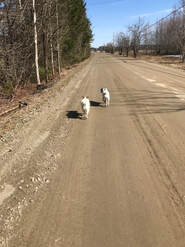 In talking with clients this week, I am hearing about stress from many directions. There is no shortage of that going around, along with Covid19. I often talk about using enrichment with animals, and on my social media (links below) I post photos of various ways I present my horses and dogs with things to do which enrich their lives and reduce stress. But what about us? It's important to remember to do this for ourselves as well. And many of the things I like to do to relieve stress also benefits the dogs. For me, going outside is a big stress reliever. My first choice is walking: with dogs and/or horses. Regardless of where you live, I think all cities, states and countries allow some outside time for dog walking. I'm also outside numerous times every day doing barn chores. In warmer months, the terriers like to hunt around while I work in the garden. On the rare occasion which I am away from home, I miss those regular outside breaks tremendously. When I start to feel antsy, or my head is full of too much worry, fresh air is the first cure I turn to.
 Today I thought that perhaps I should bake specifically for the dogs for two reasons. One: a month in to this stressful situation, I need to make a conscious effort to cut back on the amount of sugar-laden things I am baking, (and my sourdough needs to be fed tonight to be ready for bread tomorrow). Two, I knew I had a box of King Arthur dog biscuit mix in my pantry (available from King Arthur or Amazon) that had been in there too long. I climbed on a chair and pulled it out from the back of the top shelf to read that yes, it had expired in 2017. I'm not one to be too concerned about expiration dates of well packaged goods so that wasn't going to stop me. I was surprised to find it was actually a yeasted mix but luckily the yeast was packaged separately from everything else so I put it in the recommended amount of water to test it.  Lo and behold, in a few minutes it was bubbling up so I went ahead and mixed up the dough. It had a wonderfully garlicky smell to it. The dough had to rest for an hour before being rolled out, cut, and baked so it wasn't a quick and easy mix. They have a recipe on their website which you can make biscuits from scratch in an hour, no mix needed. That recipe can be made by just dropping dough in a ball or rolling and cutting them. I'm not a fan of mixes and this discovery did nothing to improve my opinion. The dogs and I went for a walk during the downtime. There are times when just sitting on the couch snuggled with dogs is what I need (see photo at top of page!). They squirm a little at first, nosing under my hand for massages. As long as I'm truly relaxing and not playing with my phone, this massaging helps me as well. A study conducted last year at Washington State University documented a drop in salivary cortisol levels of students who were allowed to interact with dog and cats. So it's not just your imagination. Eventually my dogs drift off to sleep while I sit and enjoy the sound of them breathing and the contact with them. So please, take this trainer's advice and don't let anything about your dog add to the stress of this time. I'm a huge proponent of training as enrichment, but if it feels like too much right now, just enjoy their company. Maybe do a training session where you only work on well known behaviors they love to do. Or maybe you skip training and focus on playing, observing, and snuggling. Let their companionship work its magic. I recommend making a plan for when you will get back to training, since you don't want to stop training altogether. Schedule your break like a vacation, and on the day you choose, your dog will be thrilled for the opportunity to learn. I have recently realized that my understanding of training rules has done a 180 degree turn over the years. I realized this because I am still using the same phrases, and people I teach are interpreting them the way I used to, rather than what I mean now. Confusing. We frequently use the word "allow" to describe rules, as in "my dog is not allowed on the furniture". Or I might say to a client, "you must no longer allow him to ignore your recalls". This is why my dogs are not allowed to jump on the furniture or into the car unless they are invited! When I looked up the definition of "allow", I read:
If I'm withholding permission, that means I need to have trained him to stay on the floor until I give that permission. That doesn't happen by yelling at him after he's already gotten up there. It happens via the second part of the definition. If I'm not giving him time or opportunity, that means I need to have set up the environment in a way to prevent him from having access to the couch. I use an ex pen...around the couch! Growing up (for a puppy) or settling in to a new home (for a rescue) with habits of sleeping on comfortable dog beds on the floor (in a sun spot or shady spot depending on the temperature) makes it much easier to prevent that couch jumping habit later. During that time you can also teach a calm and reinforcing "off" cue in case the mistake is made (you can see more detail on this in my previous post). When Wilder first moved in with us, he was not "allowed" to chase sheep As to that rule for my clients about not allowing their dogs to ignore recalls, I provide all new clients with a long rope and encourage them to use the same rule I use with new dogs in our family. Note, the rule is FOR ME. That rule is that the puppy or dog is always on a rope when outside until two requirements are met, those being that the puppy turns one year old and has a rock solid recall. In this way, I do not allow the dog to run away. If she is attached to me via a rope, then she is prevented from making that mistake. I keep the rope short enough at first that it's easy to do lots of little recalls with great treats. When the puppy/dog is responding quickly, I can let the rope out a little at a time over many days, weeks and months until that recall is rock solid at great distances and even under great distractions. In this way, I have not allowed the dog to ignore me. Unfortunately, too often what happens is that in fact the people allow the dog to make a mistake and then punish when it does. That is just unfair. Let's look at one of the definitions of "rule":
Saying "no" with positive reinforcement sounds like an oxymoron. I find there are two main instances when people reach for that "no!". One situation is when they want to respond if an animal does something "wrong". The other situation (I find is even more of an issue with horse people), is how to convey that the animal must never do a particular behavior. Examples: "what do I do when my dog steals food off the counter?" "I need to teach my horse never to go over the top of me" In this post, I will address the the first situation, in which people think they can't let the animal get away with something. They are often upset or angry at what has happened- something has been chewed up or eaten or peed on. They want to DO something in response. In a post on my Bookends Farm blog, I address the second situation. The first thing to examine is that "no" is not an action. It doesn't give any information. If, as you were reading this, I walked up to you and said "no!"...what would your reaction be? Take a minute to think about this. think, think, think. OK, got your response? If it happened to me, I would think, "no what?" Am I doing something wrong? If "no!" has been previously paired with punishment, I would also be fearful. I would certainly stop reading on the computer, if just to look at the naysayer. Depending on past punishment, I might back away or even run away. That might or might not stop what you didn't like, but it wouldn't help me understand what it was that you were saying "no" to. Was it the reading? Was it specifically what I was reading? Was it touching the computer (are my hands dirty)? Was it sitting? Was it sitting in a particular chair? Was it the room I was in? Was it something else I was doing (biting my nails, chewing my lip, wiggling a foot, crossing my legs, the glass I had put water in?)? So you've just said "no", and there is a good possibility that I've stopped doing what you didn't like because I froze when you said it...but I have learned nothing. There is also a good possibility that I've become more fearful of you, your presence, or your proximity and will stay further away from YOU in the near future (after all, everything was fine until you walked in the room). Remember, punishment has unintended consequences. You may think that because you stopped me, I won't do it again, but since I have no idea what your concern was, I may or may not do it again. If this seems farfetched, try this scenario: a dog is half asleep and chewing an itch when a person walks in and says "no!". What is the person saying "no" to? Is it sleeping? Chewing? Where the dog is (on the couch, on the owner's favorite sweater, in a specific room), the timing? (dog just came in and is wet or muddy)...etc! Instead of saying "no", I give my animals something To Do instead. I give them a solution to my problem (remember, it's not a problem for them or they wouldn't be doing it). To use the couch example, my dogs are not allowed on couches unless they are invited onto the couch with someone. I chose this parameter because it means I can assess when and in what conditions they are allowed on the couch. If they are muddy, I don't invite them on! If they are a bit damp, I can cover the couch first. In this very short clip, we have all been out in a misty rain so that my pants are as damp as the dogs. I spread an afghan out on the couch before I sit down, and then pat my legs twice which is the invitation to have the dogs jump up and join me. I have a clear method for encouraging dogs to stay on the floor, which I won't go into here, but then the question is, what do I do if they get on the couch without me? After all, if they spend time on the couch with me, they will discover it's a lovely place to nap and will understandably want to do it at other times. I have to decide what it is that I want them TO DO when I find them on the couch. Well, I want them to get off the couch. So I need to train that. Before I need it. So the dogs clearly understand what I mean. I train "off" to mean, "jump down off whatever you are on". Often I train this in the barn, using a hay bale. If you don't ever want your dog on the couch, you don't want to use the couch as a training tool because you'll be encouraging them up there where you don't ever want to see them. Even if I allow them up sometimes, I prefer to train the "off" elsewhere. In this video, Eloise demonstrates that she clearly understands the "off" behavior. You can train this with a hand target or with just tossing treats. In this final video, Wilder is learning to jump off the Klimb platform which he has been heavily reinforced for being on recently. I give the cue and immediately toss a treat. Before turning the camera on, the first couple times he actually ignored the tossed treat. I encouraged him off so he could get it and then was happy to jump off the next time. By preceding the toss with the cue "off", he will start to figure out that when I say "off!", a treat will be tossed. In the last couple reps you can see him start to look for the toss when I say "off!" even before I move. That's the first step. If you have experience with chained behaviors, you may be asking why my dogs don't jump onto the couch just to be told "off!" and get a treat. The answer is that once I have a solid "off" behavior trained elsewhere (my dogs always respond immediately to the cue), then they don't get a treat for jumping off the couch. We practice on hay bales and the Klimb platform and stone walls and tree stumps. They get treats for jumping off them so that the response is immediately and automatic. When they hear it from the couch, they respond the same way. But they don't get a treat. If I put it into words, their thinking could be:
every time I get on the couch, she tells me to get off before I can even get comfortable and I don't get anything for it. I might as well just stay on the floor. Remember, training is a process. I would not give the dog access to the couch (using ex-pens, baby gates, crates or other management tools) until I have a clear set of behaviors to deal with it. They need to get heavy reinforcement for staying on the floor and know the "off" cue for any time they make a mistake. To get back to "no", I don't use the word. Instead, I am proactive about training skills that will get me out of problem situations and I train those with positive reinforcement. |
what's this?Occasionally, I have thoughts I want to share. This may be inspired by a success, a struggle, or a conversation. Thanks for reading! Archives
August 2021
Categories |
Photos from miguel.discart, shixart1985 (CC BY 2.0), Günter Hentschel, skua47, Günter Hentschel, shixart1985



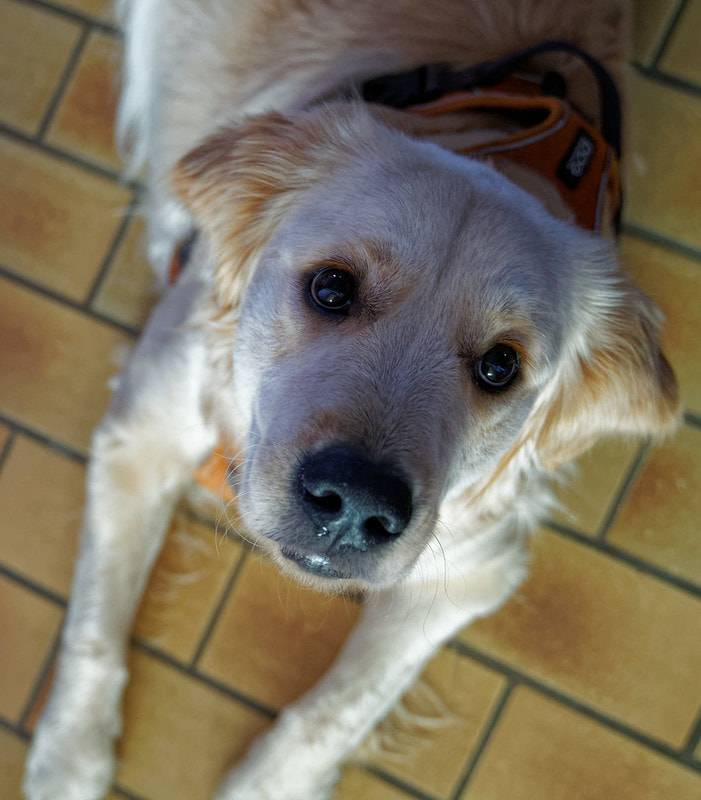


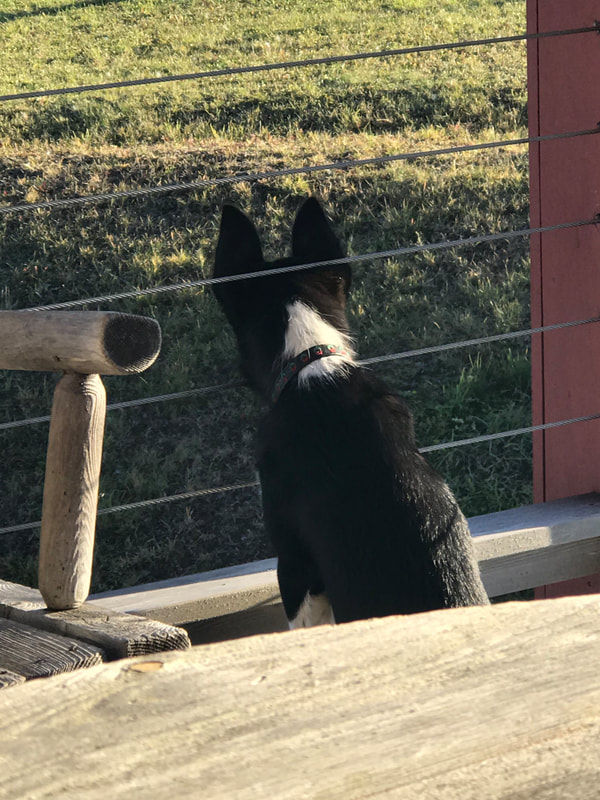
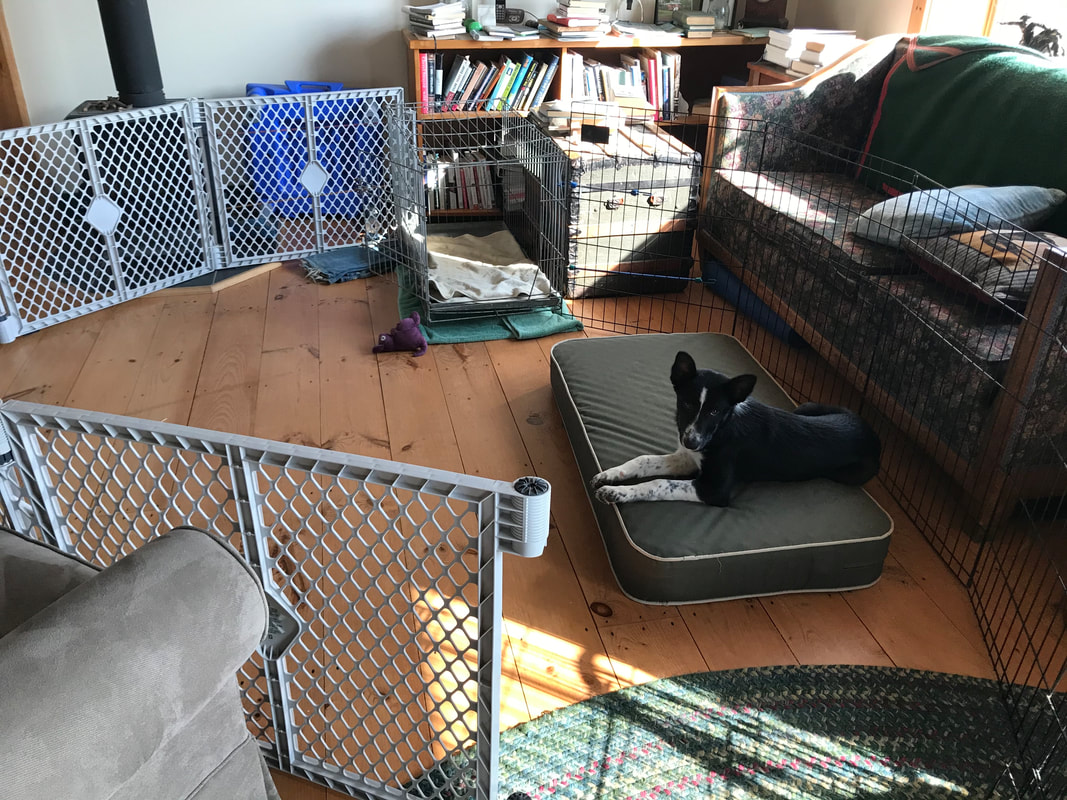
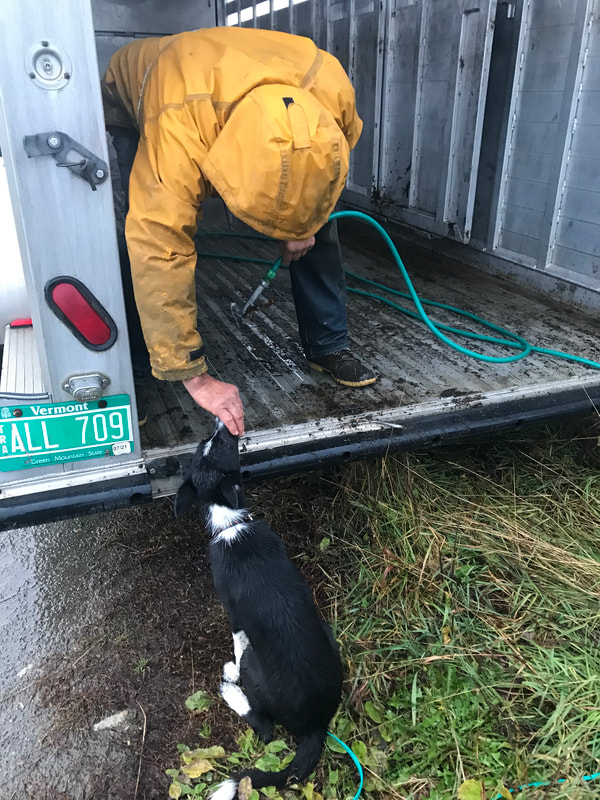



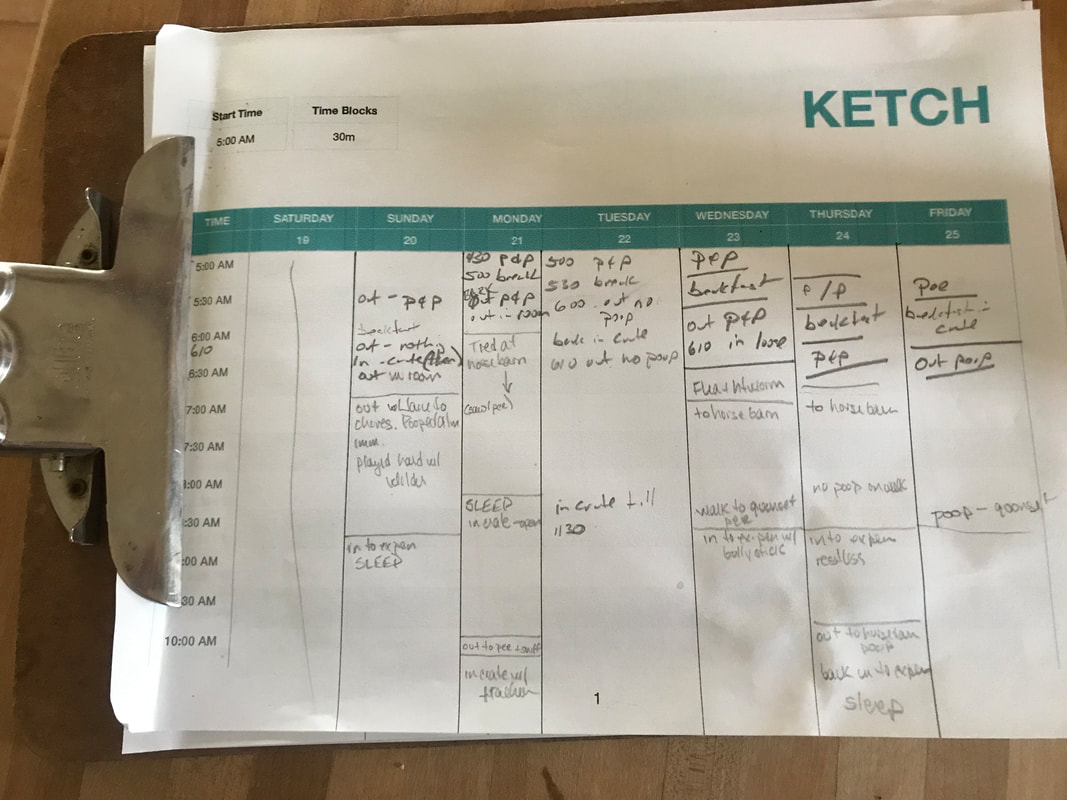




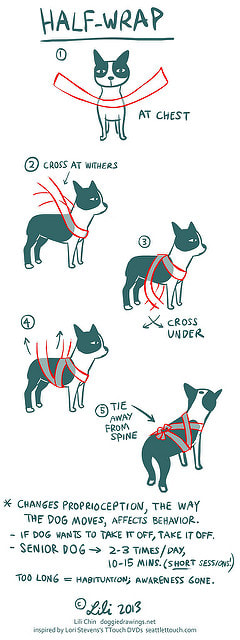


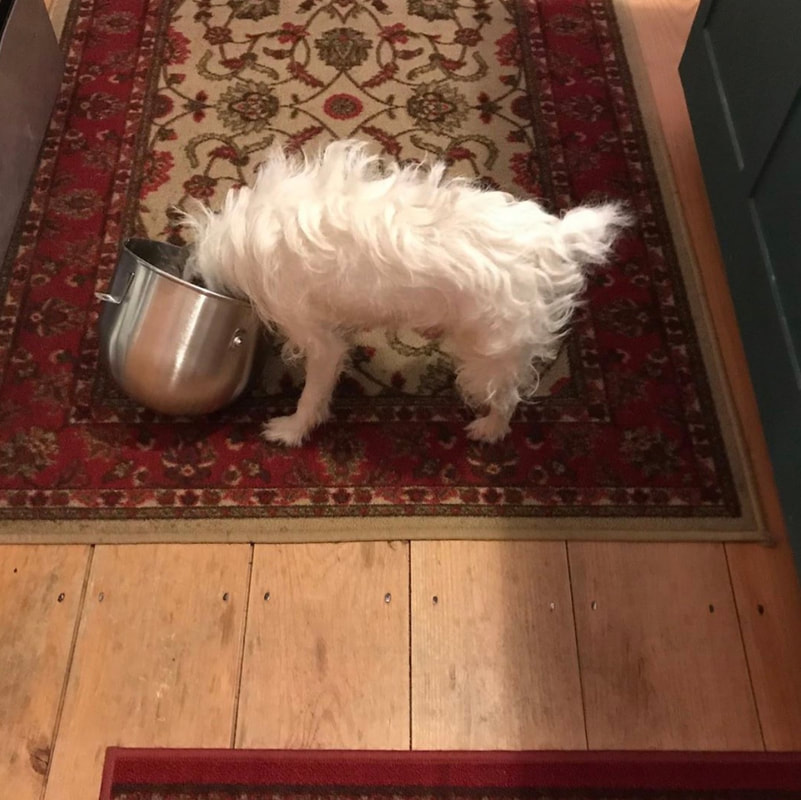

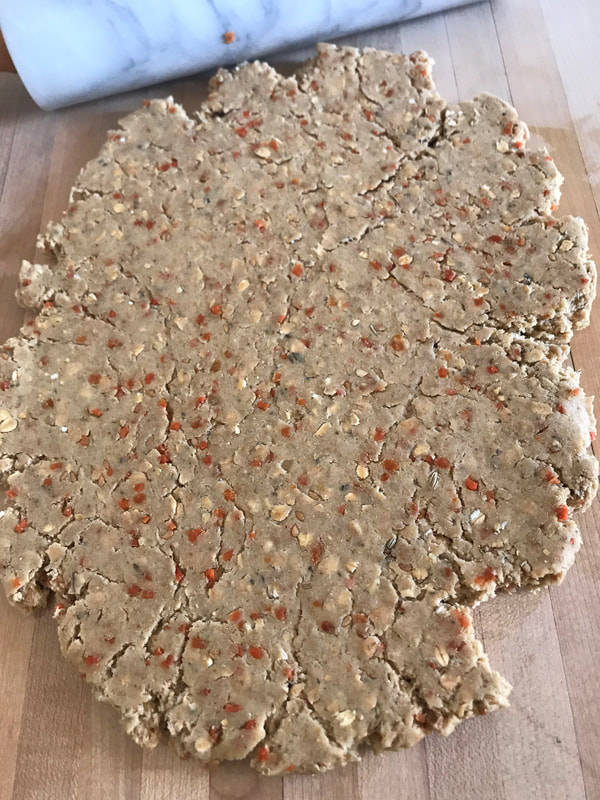
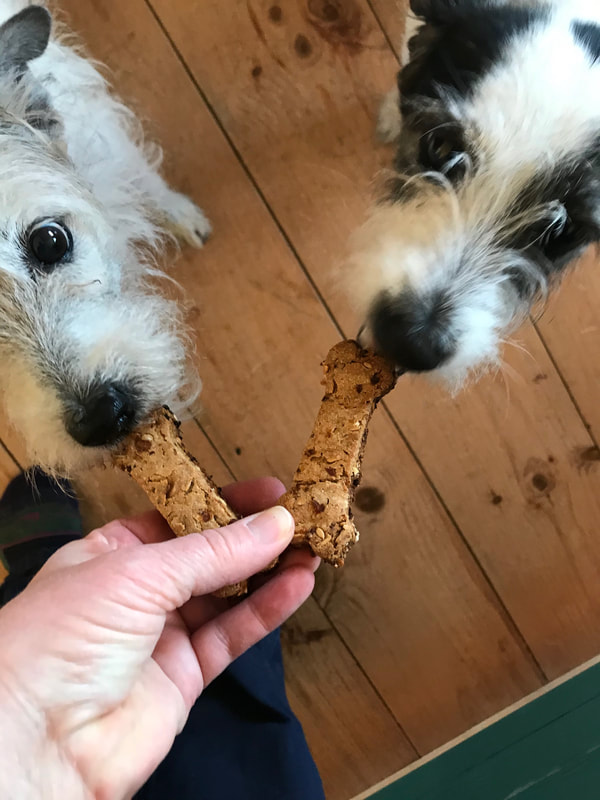
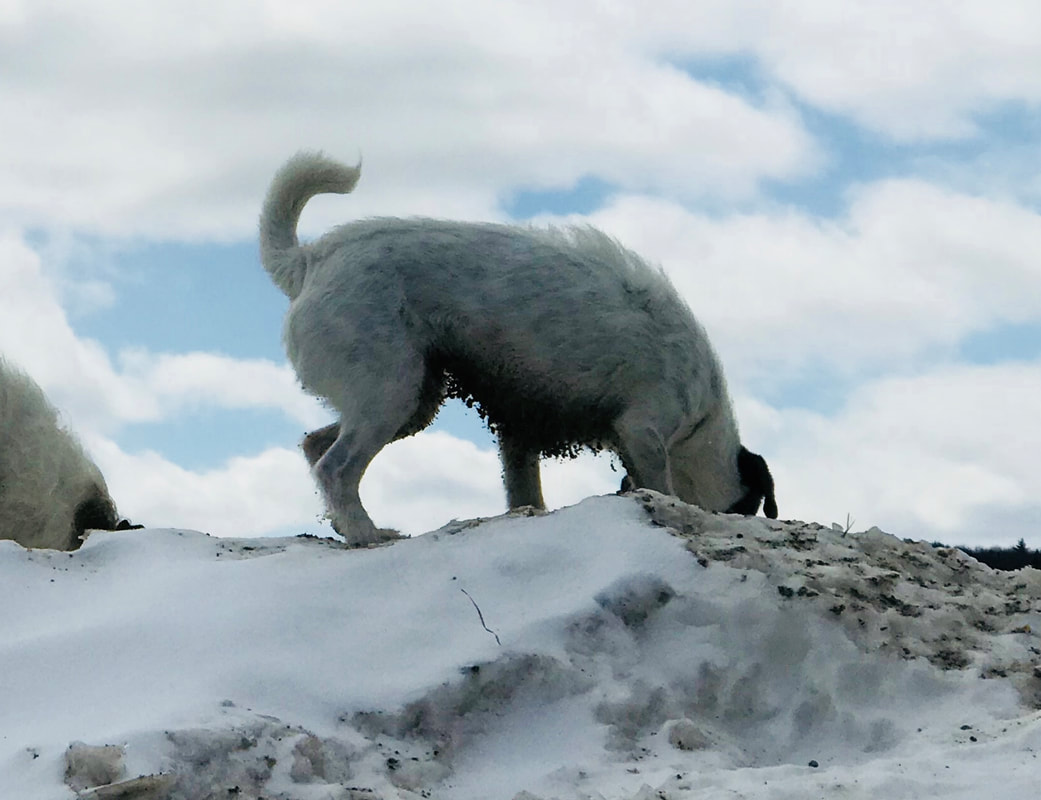
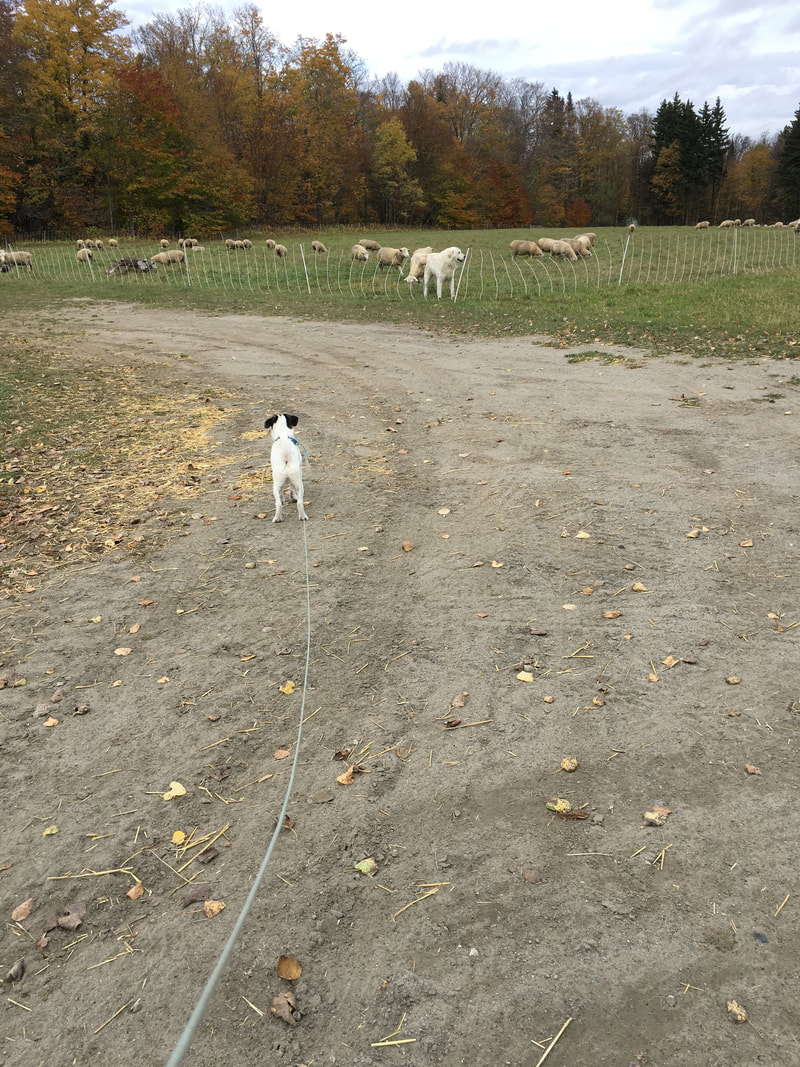
 RSS Feed
RSS Feed